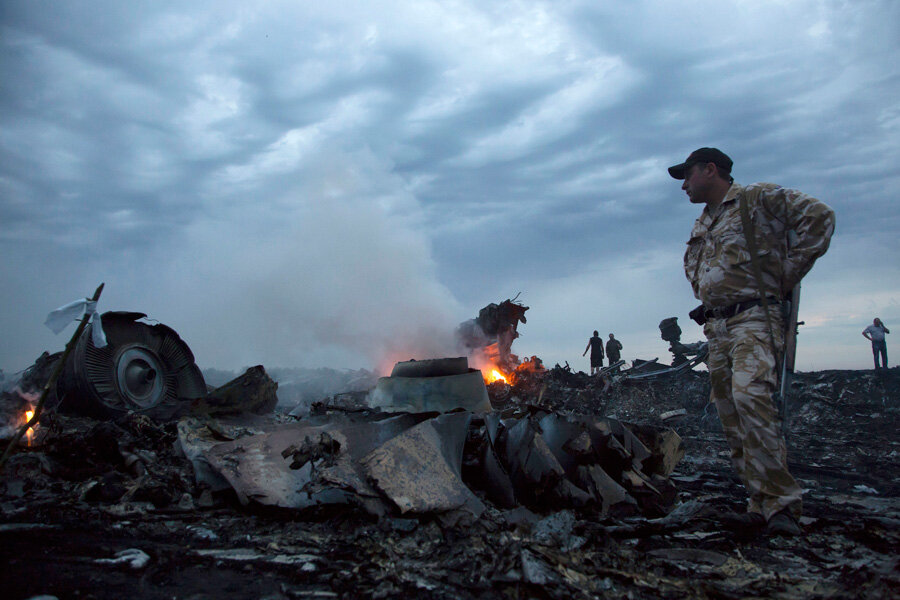Flight MH17: Possible Russian missile parts found at MH17 site, say prosecutors
Loading...
Nearly 13 months after the crash of Malaysia Airlines Flight 17 in eastern Ukraine, investigators say some of the debris recovered from the site may belong to a Russian-made missile system.
Dutch prosecutors leading a joint international criminal investigation say that the fragments are possibly from BUK surface-to-air missile system, Reuters reports.
They have also added that no “causal connection” has been found between the parts and the crash, according to the BBC.
The BUK is a ubiquitous feature of post-Soviet armies in its SA-11 (NATO reporting name Gadfly) or more advanced SA-17 (Grizzly) variants, the Christian Science Monitor’s Fred Weir reported in July 2014:
Experts say that despite its age, the BUK remains a highly effective battlefield weapon. It's able to engage several targets at once and strike at a distance of up to 18 miles. That would have put MH17, flying at an altitude of 5 miles, well within its reach. Experts say the BUK has an independent radar guidance system, which means it can operate on its own, without being plugged into any wider air defense network.
Malaysia Airlines Flight 17, flying from Amsterdam to Kuala Lumpur, was downed on July 17, 2014, in Donetsk, an area held by pro-Russian rebels, killing 298 people on board.
Ukraine and many Western countries have accused pro-Russian rebels of shooting down the plane by using a BUK missile system supplied by Russia. Moscow denies accusations and says the Ukrainian military is to blame.
The joint investigation team with representatives from the Netherlands, Ukraine, Malaysia, Australia, Britain, United States, and Russia are currently discussing the draft report on the causes of the crash in The Hague.
The final version of the report is expected to be published in October, but since July some parts of the report have surfaced.
Last July, a source told CNN that Dutch accident investigators have said that there is some evidence that pro-Russian rebels shot down the plane using a surface-to-air BUK missile. Another source also told CNN that the draft report pinpoints where the missile was fired and adds that the missile was launched from a village in territory controlled by pro-Russian rebels.
But Russia, which has assigned its own Investigative Committee to conduct a probe into the crash, thinks otherwise. The Russian committee announced last July that the Boeing 777 was likely shot by an air-to-air missile which was not made in Russia, the state-funded RT network reported.
On July 29, Russia vetoed a proposal from the UN for setting up an international criminal court to prosecute the people responsible for shooting down the plane.






